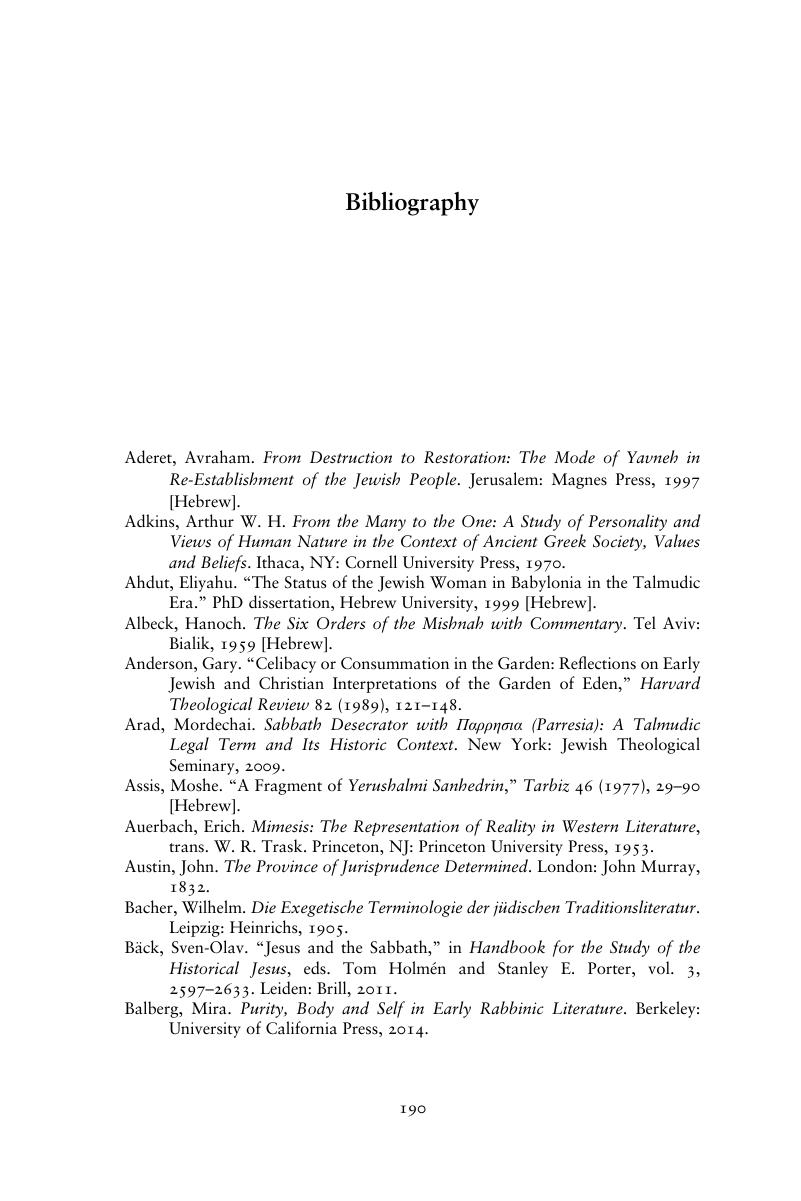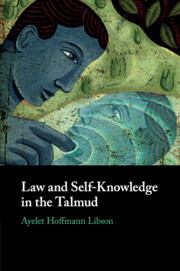Book contents
- Law and Self-Knowledge in the Talmud
- Law and Self-Knowledge in the Talmud
- Copyright page
- Dedication
- Contents
- Acknowledgments
- Introduction
- 1 The Inward Turn in Rabbinic Literature
- 2 Knowledge of the Body: The Case of Sensation
- 3 Asserting the Needs of the Body
- 4 Between Body and Mind: The Suffering Self
- 5 Self-Knowledge and a Wife’s Autonomy
- Conclusion
- Bibliography
- Subject Index
- Source Index
- References
Bibliography
Published online by Cambridge University Press: 28 April 2018
- Law and Self-Knowledge in the Talmud
- Law and Self-Knowledge in the Talmud
- Copyright page
- Dedication
- Contents
- Acknowledgments
- Introduction
- 1 The Inward Turn in Rabbinic Literature
- 2 Knowledge of the Body: The Case of Sensation
- 3 Asserting the Needs of the Body
- 4 Between Body and Mind: The Suffering Self
- 5 Self-Knowledge and a Wife’s Autonomy
- Conclusion
- Bibliography
- Subject Index
- Source Index
- References
Summary

- Type
- Chapter
- Information
- Law and Self-Knowledge in the Talmud , pp. 190 - 209Publisher: Cambridge University PressPrint publication year: 2018



